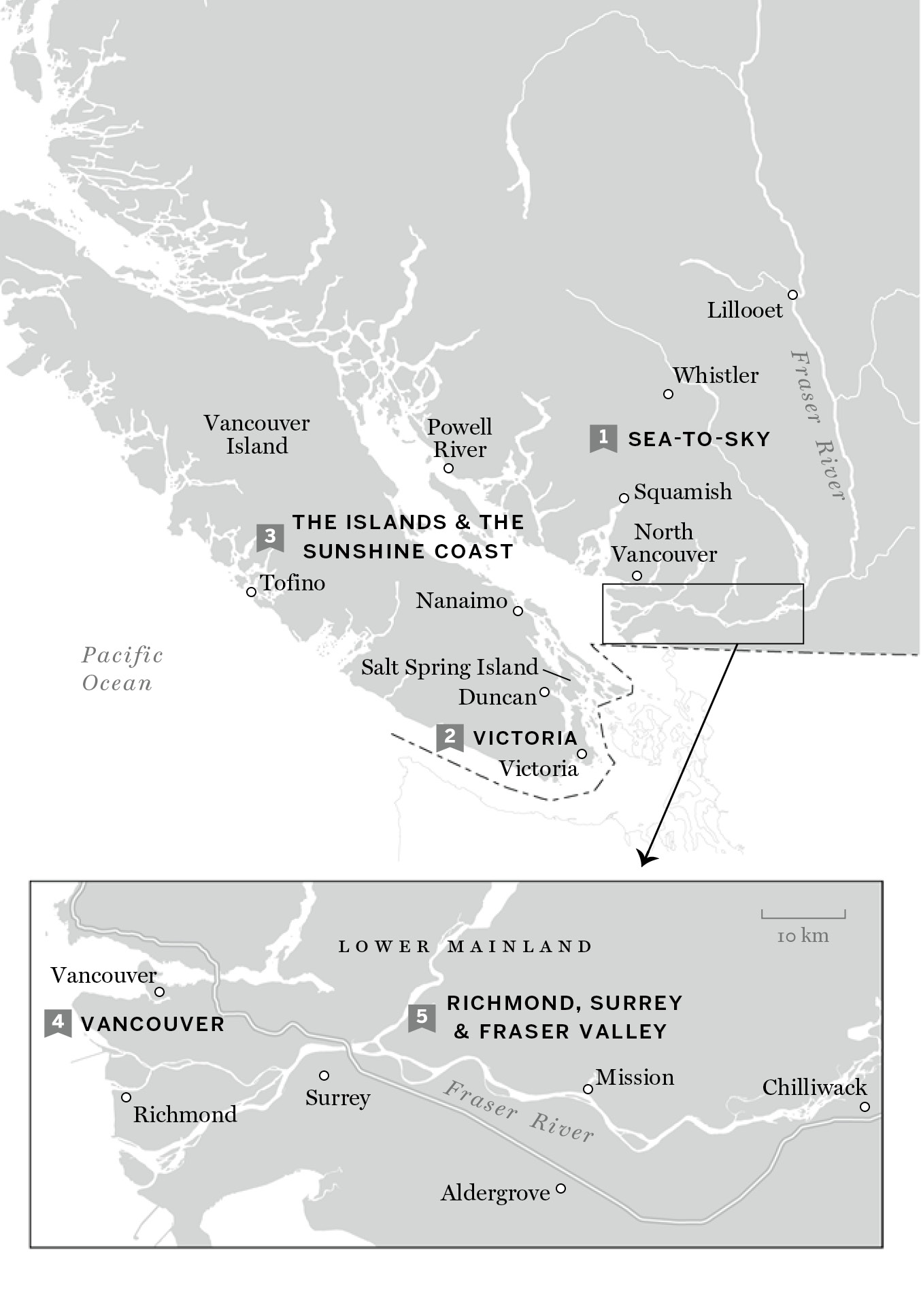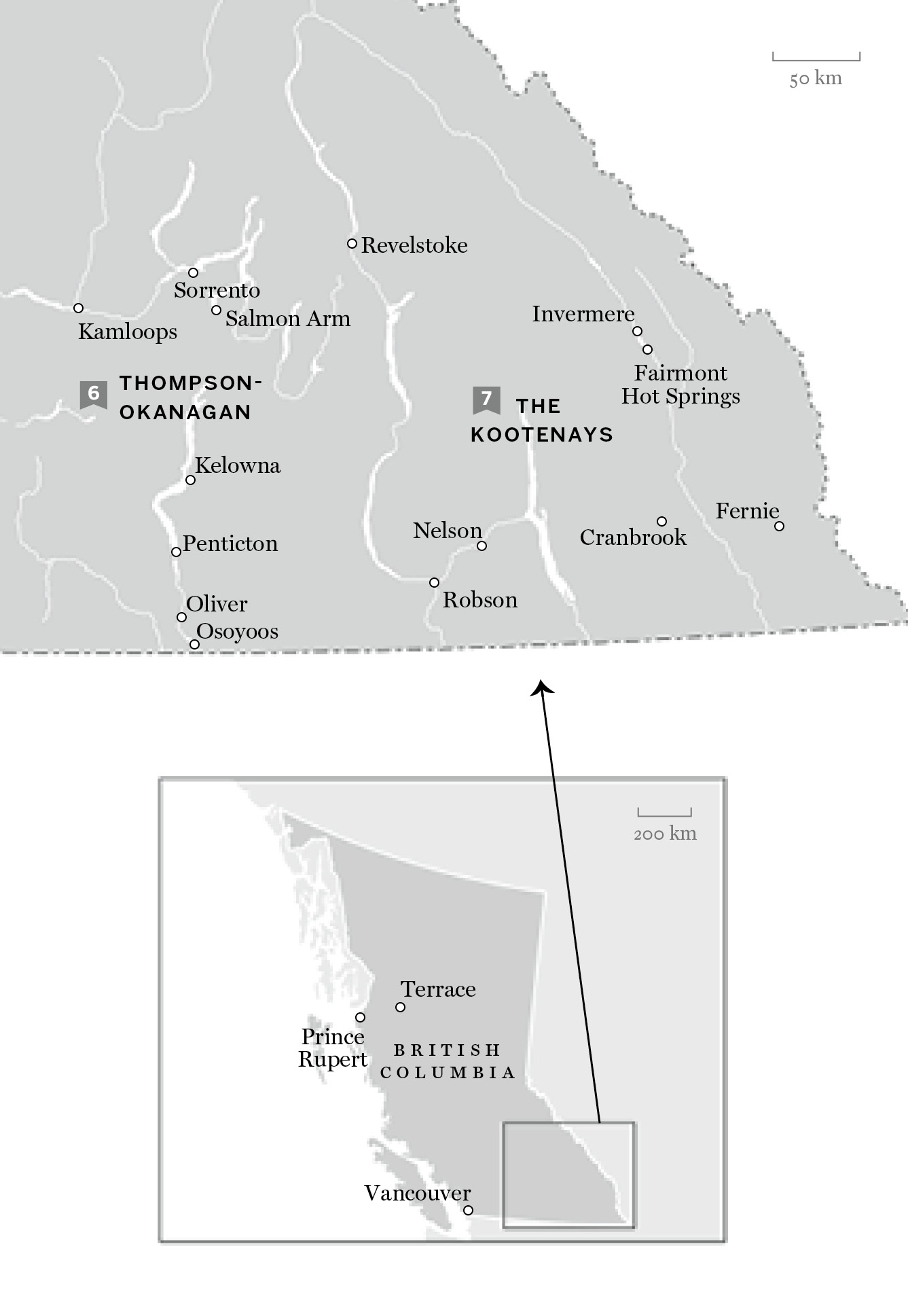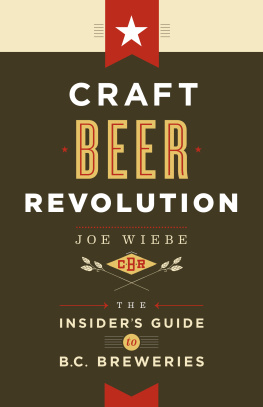


Copyright 2013 by Joe Wiebe
All rights reserved. No part of this book may be reproduced, stored in a retrieval system or transmitted, in any form or by any means, without the prior written consent of the publisher or a licence from The Canadian Copyright Licensing Agency (Access Copyright). For a copyright licence, visit www.accesscopyright.ca or call toll free to - - - 5777 .
Douglas and McIntyre ( 2013 ) Ltd.
PO Box , Madeira Park
British Columbia, Canada V N H
www.douglas-mcintyre.com
Edited by Caroline Skelton
Print edition cover and interior design by Jessica Sullivan
Maps by Eric Leinberger
Index by Stephen Ullstrom
Douglas and McIntyre ( 2013 ) Ltd. acknowledges financial support from the Government of Canada through the Canada Book Fund and the Canada Council for the Arts, and from the Province of British Columbia through the BC Arts Council and the Book Publishing Tax Credit.
Cataloguing data available from Library and Archives Canada
ISBN - - 77100 - - (pbk.)
ISBN - - 77100 - - (ebook)
Allison
What a long, strange trip this has been. It may have taken longer than either of us bargained for, but Im so lucky to have had you at my side along the way. I look forward to many more adventures with you in years to come.
Love, Joe.
Contents



INTRODUCTION
Welcome to the Revolution

BRITISH COLUMBIAS craft beer revolution began thirty years ago in the unlikeliest of spots: the tiny village of Horseshoe Bay, half an hour northwest of Vancouver. It started back in 1982 when a couple of persistentone might even say stubbornbeer lovers built a small-scale brewery using old dairy equipment and began brewing an English-style mild ale for the Troller Pub across the street.
Horseshoe Bay Brewery was Canadas first modern-day microbrewery. Its very creation went against the tide of the preceding seventy years. Until 1982 , twentieth-century Canadian beer history was bleak: the Great War, Prohibition (yes, we did suffer from that malady, too, although not for as long as our American neighbours did), the Great Depression, and another world war squeezed much of the life out of the beer industry in Canada. In the post-war era, big breweries monopolized what was left, leaving consumers with almost no choice in what sort of beer they could drink: mainly it was yellow, fizzy and bland.
Although Horseshoe Bay Brewery only survived for a few years, by building it, Frank Appleton and John Mitchell started a revolution. Since then, Canadas brewing landscape has changed radically and irrevocably. Governments have reformed archaic liquor laws and brewing regulations, often because tenacious brewers pushed them to do so. Where once it was nearly impossible to get anything other than a nearly flavourless version of Pilsner beer, there are now so many styles of beer available that many craft beer lovers are arguing for a return to simpler styleslike Pilsner.
The word microbrewery didnt even exist before 1982 but it has since become an everyday term that itself has undergone a revolution, or perhaps a rebranding, into craft beer. From an economic standpoint, craft beer has grown from nothing into a significant player in the marketplaceDecember 2012 sales figures from the provincial liquor distribution branch indicate that as much as per cent of the domestic beer sold in B.C. comes from small- and medium-sized breweriesmore than $ million annually. And the craft beer market here has been growing at a pace most hedge fund managers would drool over: expanding by more than per cent each year with total sales more than doubling over the past four years. This during a so-called economic downturn.
The first twenty-five years of the microbrewing movement saw relatively steady growth. After Horseshoe Bay Brewing broke the ice in 1982 , there was an initial burst in 1984 with the arrival of three more breweries that are still flourishing today: Spinnakers, Granville Island Brewing and Vancouver Island Brewery (originally named Island Pacific Brewing). New breweries arrived in waves over the next two decadesand there were many closures, too, as prospective brewers learned of the challenges associated with this brand-new industry.
And then everything exploded. In 2007 there were thirty-five breweries and brewpubs operating in B.C., but in the six years since then, another fifteen have opened, including seven in 2012 alone. As 2013 begins, there are fifty craft breweries and brewpubs in B.C. and by the end of the year, another eleven are expected to open, mostly in and around Vancouver.
The craft beer revolution has also spread beyond breweries and brewpubs to include restaurants and bars that are entirely focused on craft beer: so-called taphouses like the Alibi Room and St. Augustines in Vancouver that have more than ninety taps between them exclusively serving craft beer from B.C., the Pacific Northwest and Europe. Restaurants host beer-pairing dinners and hire certified cicerones (the equivalent of a wine sommelier in the beer world). You can find cask-conditioned beer on tap any day of the week in Vancouver and Victoria, and cask events occur in other communities around the province all the time. Beer festivals take placeand sell out quicklyin Victoria, Penticton, Vancouver and the Kootenays every year. Many private liquor stores showcase craft beer above and beyond anything else, and there are several specialty distributors devoted to sourcing difficult-to-find craft beers from around the world. And often the people buying these beers are not planning on drinking them any time soon; yes, cellaring can apply to craft beer as well.
B.C.s craft beer revolution has been an exciting adventure over the past thirty years, but its far from over. Vancouver has only recently awakened to craft beer, and now its near-insatiable thirst is leading to the birth of new breweries as well as big expansions for extant operations. Craft breweries across the province from Tofino to Fernie are drawn by Vancouvers gravitational pullif they brew good beer and can get it there, it will sell. And that, precisely, is what the craft beer revolution has been about from the start: good beer, crafted by folks who care about beer first and foremost, enjoyed by people who crave an authentic, delicious product.
Welcome to B.C.s craft beer revolution. If you dont know much about craft beer, youve come to the right place. This guidebook will get you started, and if you want to learn more, the community of beer lovers and brewers in British Columbia is very accessible and will happily welcome you into its fellowship. If you already consider yourself a hophead or a beer geek or just a plain old beer lover, then I hope you will learn something new in this bookperhaps an aspect of the history, an anecdote from a brewer, or even a beer you havent tried yet.
















